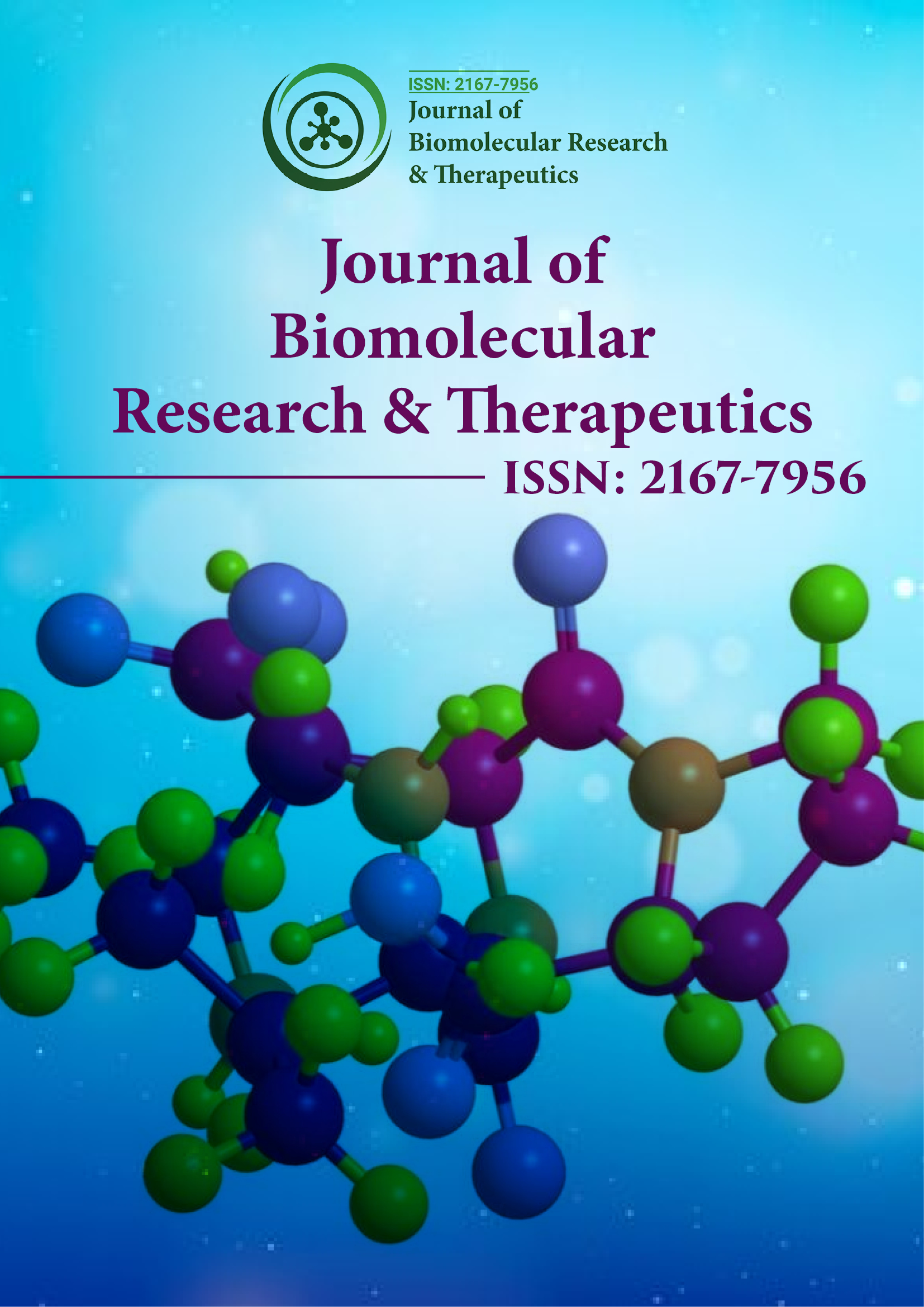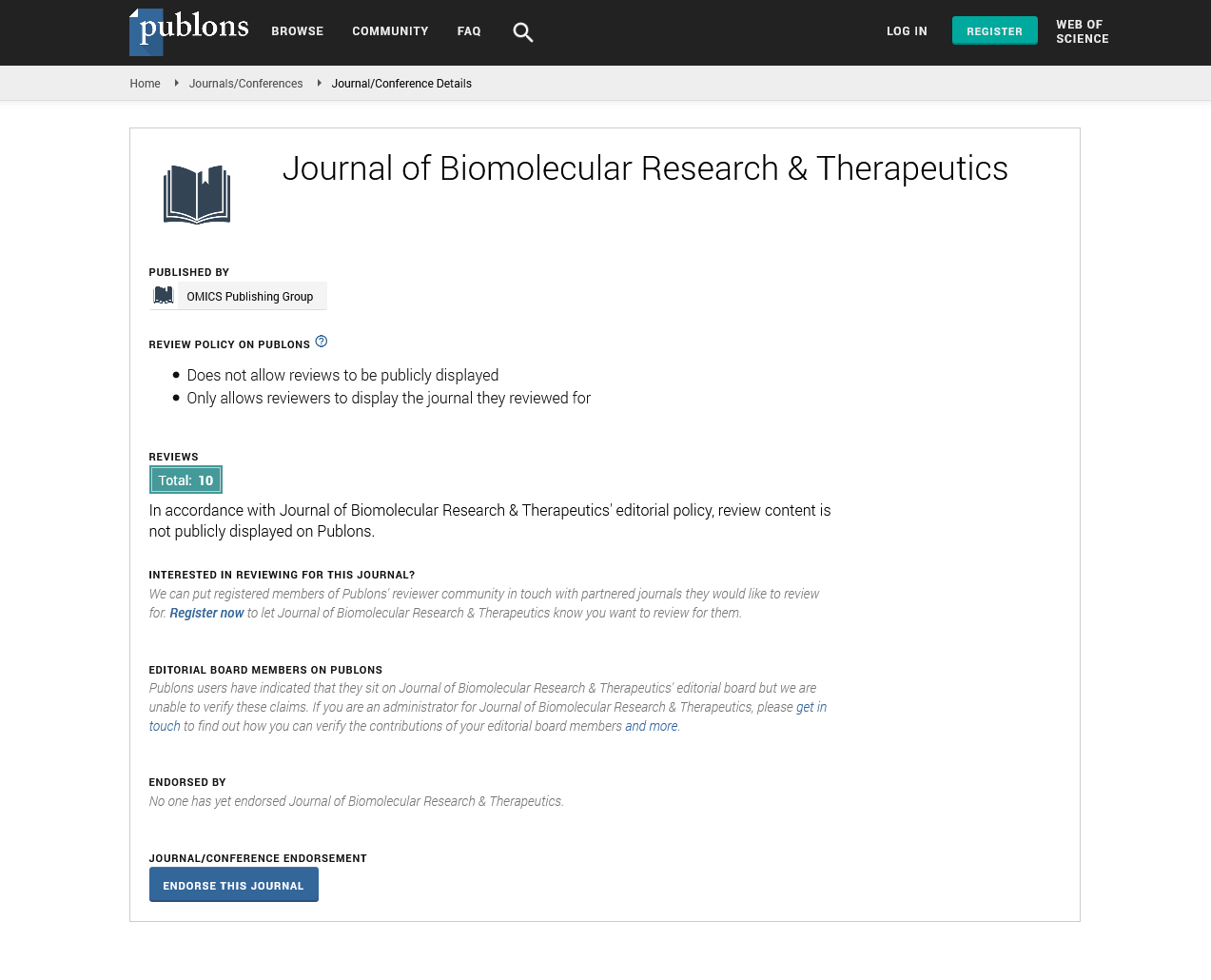PMC/PubMed Indexed Articles
Indexed In
- Open J Gate
- Genamics JournalSeek
- ResearchBible
- Electronic Journals Library
- RefSeek
- Hamdard University
- EBSCO A-Z
- OCLC- WorldCat
- SWB online catalog
- Virtual Library of Biology (vifabio)
- Publons
- Euro Pub
- Google Scholar
Useful Links
Share This Page
Journal Flyer

Open Access Journals
- Agri and Aquaculture
- Biochemistry
- Bioinformatics & Systems Biology
- Business & Management
- Chemistry
- Clinical Sciences
- Engineering
- Food & Nutrition
- General Science
- Genetics & Molecular Biology
- Immunology & Microbiology
- Medical Sciences
- Neuroscience & Psychology
- Nursing & Health Care
- Pharmaceutical Sciences
Perspective - (2022) Volume 11, Issue 12
Pancreatic Cancer and its Mechanisms in DNA Mutations
Shizuka Sato*Received: 25-Nov-2022, Manuscript No. BOM-22-19268; Editor assigned: 28-Nov-2022, Pre QC No. BOM-22-19268 (PQ); Reviewed: 15-Dec-2022, QC No. BOM-22-19268; Revised: 22-Dec-2022, Manuscript No. BOM-22-19268 (R); Published: 29-Dec-2022, DOI: 10.35248/2167-7956.22.11.249
Description
Numerous mutations in oncogenes and tumor suppressor genes cause cancer. Although Pancreatic Ductal Adeno Carcinoma (PDAC) has distinct features involving some mutations, the multistep carcinogenesis of colorectal cancer demonstrated that cancer can be produced by the accumulation of "damages" in genes as well as genes, resulting in an accumulating effect. In multistep carcinogenesis, the accumulation of abnormalities such as genomic deletions in at least 7-8 genes due to long-term exposure to carcinogens is thought to induce cancer incidence in the early stages however fresh mutations occur throughout tumor development. According to this cancer mutations drastically affect genes in all human genomes. Liquid biopsy, in general, provides for early tumor detection and stage diagnosis without the necessity for a solid tumor biopsy sample.
The surgically resected tumor can be used to harvest nucleotides. Furthermore, the fluids in pancreatic cysts can be exposed to liquid biopsy which has a higher specificity and sensitivity than blood sample. PDAC biomarkers that are now available include carbohydrate antigen. Non-invasive screening can be used to identify oncogenic mutations in tumor tissues. Numerous efforts have been made to identify tumor derived cells, cell free nucleic acids and extracellular vesicles in bodily fluids such as urine. Several efforts have been made to create effective PDAC detection technology. A recent met genomics study focusing on the gut and oral micro biomes revealed that it could be a valuable source of biomarkers for identifying people with PDAC and their prognosis. A polyamine is a chemical with more than two amino groups. S-Adenosylmethionine (SAM), a methy donor for the methylation of essential molecules such as DNA, RNA and histones is related with polyamine metabolism.
In cancer, polyamine production is usually increased. The increased flux of polyamines and their metabolites raises intracellular polyamine levels which are required for cell growth and proliferation intracellular biochemical pathways such as one-carbon metabolism in mitochondria and cell-to-cell contact. A urine polyamine panel can tell the difference between patients with human pancreatic cancer and pancreatitis and healthy controls implying that a companion diagnostic technique could aid in the treatment of PDAC. The cellular polyamine dependent epigenetic regulations in human cancer cells found that polyamine flux suppresses histone lysine demethylases through competitive suppression against histone H3 lysine K4 (H3K4) and that active chromatin marking for many critical genes maintaining tissue homeostasis was found to contribute to the development of several cancers. At the moment surgical tumor excision is the best option for improving PDAC patients' survival. As a result it is critical to detect the symptoms as soon as possible diagnose the early stages of PDA, and doing the surgical procedure. Chemotherapy, radiation treatment and immunotherapy will be used to supplement therapeutic approaches for PDAC patients. As previously importance of many techniques, such as metagenomics (intestinal bacteria), metabolomics (polyamines) and transcriptomics have arisen to aid in early diagnosis. At the moment efforts are being made to use this procedure for the early diagnosis and metastasis diagnosis of PDAC as well as to select and monitor a treatment strategy that makes full use of several modalities, including as surgery, chemotherapy, radiation therapy and immune therapy in combination.
Citation: Sato S (2022) Pancreatic Cancer and its Mechanisms in DNA Mutations. J Biol Res Ther. 11:249.
Copyright: © 2022 Sato S. This is an open access article distributed under the terms of the Creative Commons Attribution License, which permits unrestricted use, distribution, and reproduction in any medium, provided the original author and source are credited.

